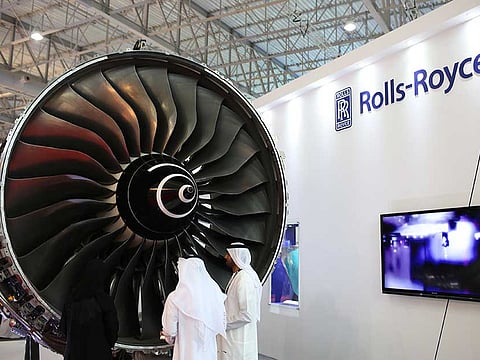UK's engine maker Rolls-Royce has designs on narrow-body jets
Demand for such aircraft could emerge from pandemic hit much faster

London: Rolls-Royce Holdings plc said the coronavirus crisis may provide it with space for development of critical new engine technologies and a possible re-entry into the narrow-body jetliner market.
While the wide-body plane sector in which Rolls specializes has been battered by the pandemic, the slump will also create a window before cash-strapped airlines are ready to invest in radical changes such as a push into hydrogen propulsion, engineering and technology chief Simon Burr said.
"The industry's going through a bit of a hiatus," he said. "We want to be in a position that when someone launches a new product we're credible, whatever that market may be. We don't rule ourselves out of any part of the market today because evolution in the 2020s could be really quite exciting."
Make up elsewhere
Rolls-Royce's focus on bigger planes threatens to dent earnings for years to come with demand for inter-continental travel set to remain sluggish even after a COVID-19 vaccine is rolled out, according to the International Air Transport Association. While the UK company is cutting thousands of jobs to survive the crisis, Burr said it's seeking to preserve engineering talent for the future by transferring staff to its nuclear and defense businesses.
Hydrogen prospects
Rolls is in contact with Airbus SE about new possibilities, and doesn't rule out putting itself forward to provide engines for a hydrogen-powered model that the Toulouse-based manufacturer aims to produce by 2035, Burr said. That plane would be a narrow-body seating up to 200 people.
Rolls's main development project right now is the UltraFan jet engine, planned as a successor to the Trent series that helped turn it into a global force. While the Trent family powers only wide-body planes, the UltraFan is set to have a thrust range spanning 25,000 pounds to 100,000 pounds, making it suitable for the full spectrum of jetliners.
That could include a conventionally powered narrow-body under consideration at Boeing Co. to succeed the 737 Max. (Rolls has held talks on the prospective plane.)
Pilot tests
Ground tests on the UltraFan will begin late next year, with the engine entering service toward the end of the decade rather than 2025 as targeted, after the pandemic pushed back development. Still, the launch could be accelerated if a customer wants the turbine sooner, Burr said.
Rolls-Royce previously pitched the UltraFan for Boeing's 'New Midsize Airplane', intended to occupy a mid-market position once filled by its 757 and 767, but was unable to meet the planned development schedule. The NMA was later shelved amid Boeing's travails with the Max, buying time to advance the UltraFan's development and be ready for an alternative aircraft design.
Burr said a manufacturing fault with the XWB turbine that powers the Airbus A350 has affected just over 20 engines, the same number flagged in August. The glitch has turned out to be more minor than a succession of costly issues with the Trent 1000 used on the Boeing 787 Dreamliner.
Sign up for the Daily Briefing
Get the latest news and updates straight to your inbox







